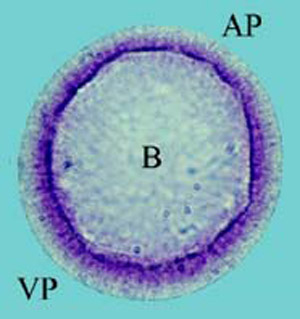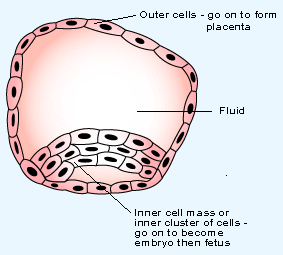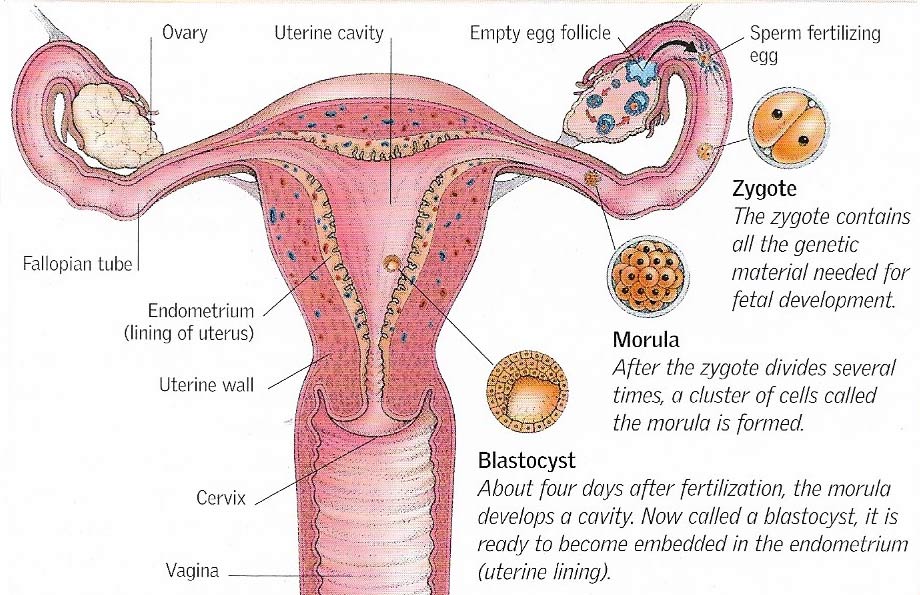blastula

Figure 1. A late blastula characterized by a single layer of cells surrounding the central hollow area – the blastocoel (B). The blastomeres at the vegetal pole (VP) are taller than those at the animal pole (AP), making the vegetal pole appear slightly thicker. Photo: University of Guelph.

Figure 2. Human blastocyst.

Figure 3. After fertilization in the fallopian tube, the nuclei of the sperm and egg fuse to form a new cell. This cell, the zygote, contains 46 chromosomes, 23 from each of the parent cells. As it travels to the uterus, the zygote divides, forming a cell cluster (the morula) by about three days after fertilization. The morula develops a cavity and is now known as a blastocyst, which will become the embryo.
A blastula is a stage of embryonic development of animals near the end of cleavage (cell division), but before gastrulation (Figure 1). In animals where cleavage involves the whole egg, the blastula usually consists of a hollow ball of cells (blastomeres) surrounding a fluid-filled central cavity, the blastocoel. In mammals a similar cluster of cells, the blastocyt is formed, with an inner cell mass and a spherical envelope that develops into the placenta.
Blastocoel
The blastocoel is the fluid-filled cavity formed within the mass of cells of the blastula of many animals during the later stages of cleavage.
Blastocyst
A blastocyst is a preimplantation embryo (Figure 2). The blastocyst consists of a sphere made up of an outer layer of cells (trophectoderm), a fluid-filled cavity (blastocoel), and a cluster of cells on the interior (inner cell mass). The outer layer of cells goes on to form the placenta. The inner cluster of cells goes on to form the fetus.
Trophoblast
The trophoblast is the tissue that forms the wall of the blastocyst. At implantation the trophoblast forms two layers, an inner cellular layer (the cytotrophoblast) and an outer syncytial layer (the syncytiotrophoblast or plasmoditrophoblast), which erodes the maternal tissue and forms the chorionic villi of the placenta.
Blastomere
A blastomere is an undifferentiated cell of a cleaving embryo, and of the morula and blastula stages of embryonic development.


